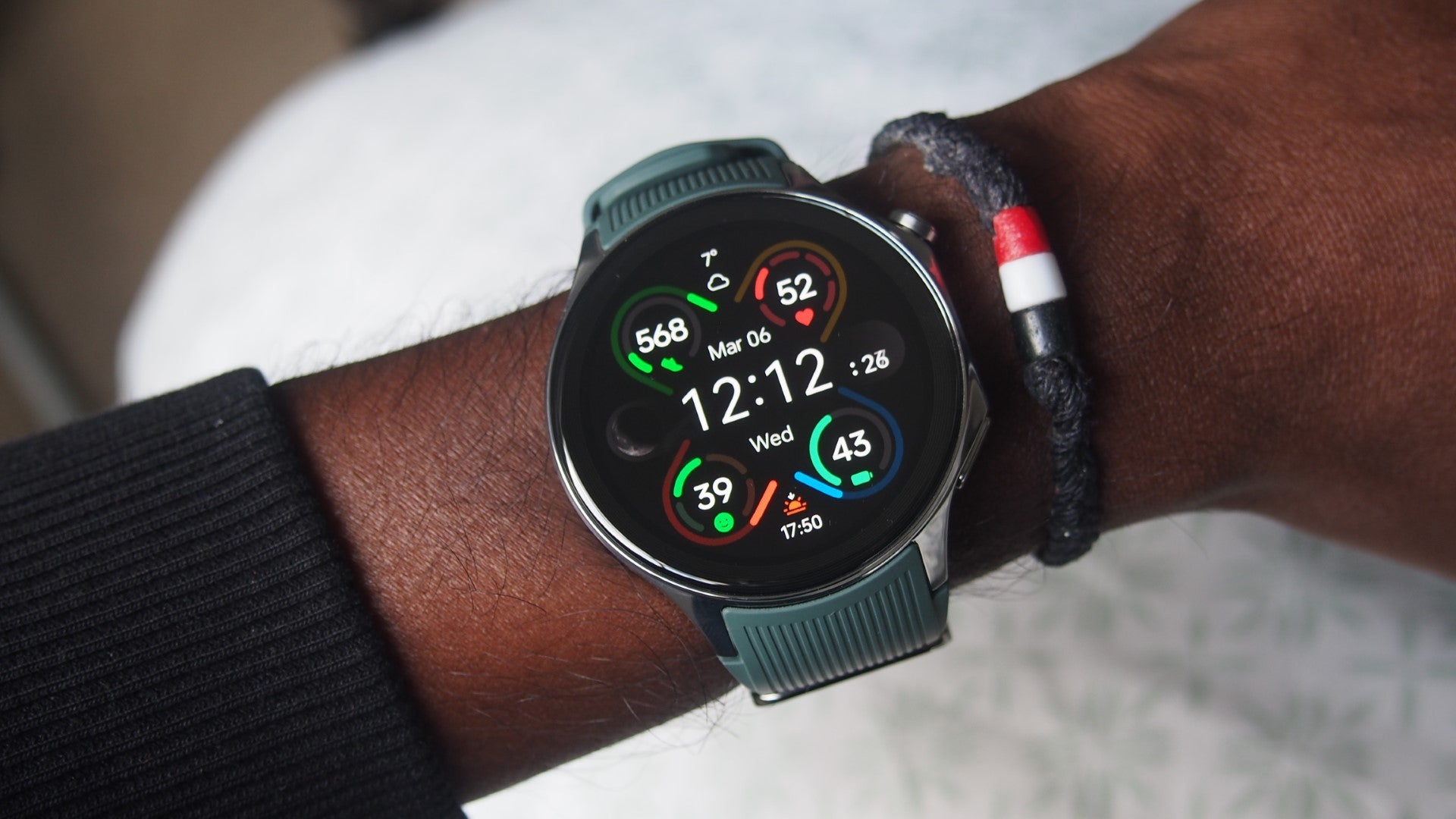Fitbit Luxe Review
A fitness tracker Fitbit should have launched some time ago
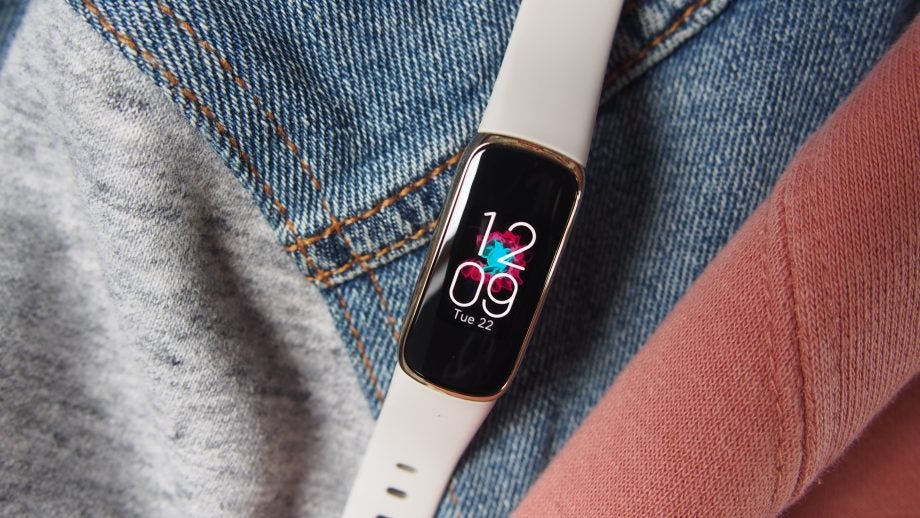

Verdict
The Luxe is a fitness tracker Fitbit should have launched some time ago. The company has essentially taken the slim, attractive profile of the Alta tracker many thought it had ditched, adding a colour touchscreen display that makes it a much nicer tracker to use. There’s nothing particularly groundbreaking here on the features front, but it ultimately rounds out Fitbit’s core fitness and wellness features with good but not class-leading battery life in a design that offers plenty of appeal.
Pros
- Decent-quality AMOLED screen
- Good for resting heart rate monitoring
- Nice straps available
- Works well for sleep tracking
Cons
- Notifications feel cramped
- Connected GPS support isn’t always reliable
- Features hidden behind Premium subscription
- No payment support
Availability
- UKRRP: £129.99
- USARRP: $149.95
- EuropeRRP: €149.95
- Canadaunavailable
- AustraliaRRP: AU$199.95
Key Features
- Colour OLED displayFinally we’ve got a colour screen on a Fitbit band
- Water resistantUp to 50m
- Connected GPSUses your connected phone for GPS signal
Introduction
The Fitbit Luxe fitness tracker was announced under the company’s new Google ownership, but it does feel like a bit of a throwback to a tracker that Fitbit seemingly ditched.
Back in 2016, Fitbit launched the Alta as a fashion-focused member of its wearable family, positioning it between its flagship Charge tracker and cheaper models such as the Zip and Flex.
The Luxe is a new line, but it feels a lot like the Alta reborn, but with a feature many have been crying out for on Fitbit’s slimline bands – a colour display.
This means it joins the brand’s Versa and Sense smartwatches in bringing that pop of colour all while continuing to deliver decent battery life. Fitbit also brings some of its smartwatch OS flourishes to its new fitness band.
The Luxe sits between the Inspire 2 and the Charge 4 in terms of pricing. Fitbit’s appeal has always lain in its ability to deliver a good experience on and off the wrist, and that’s exactly what the company aims to offer with the Luxe.
Design and screen
- Decent AMOLED display
- Attractive stainless steel case
- Fashionable accessory bands available
- Waterproof to up to 50 metres
If you like your fitness trackers slim, then the Luxe will appeal. It’s packing a 36mm-sized case with the option of small and large band sizes to ensure it’s a good fit for the majority. As a package, it’s water-resistant up to 50 metres and so safe to keep on in the shower and during a swim.
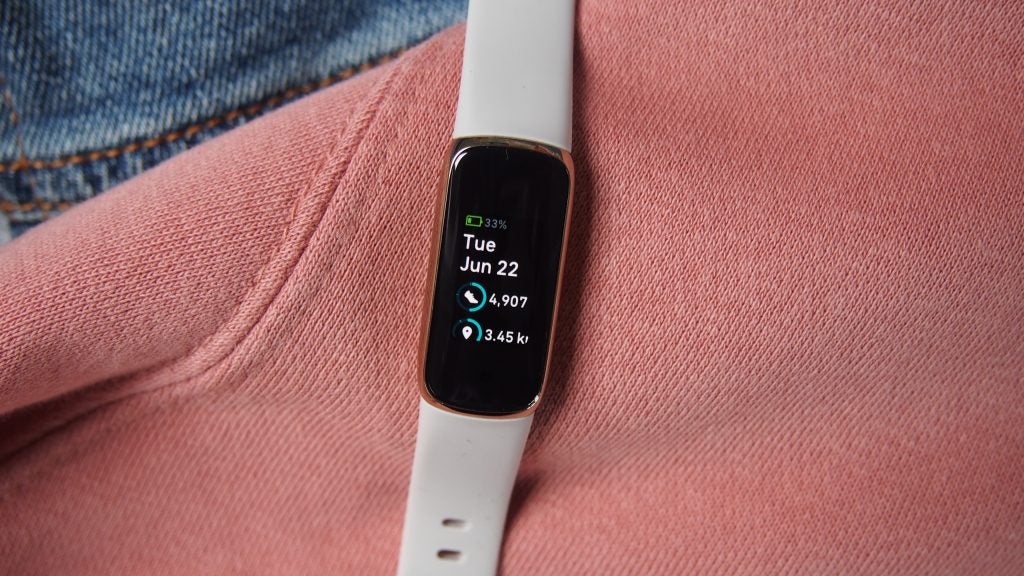
The Luxe is pleasingly light, sporting a silicone strap with a metal buckle to make sure it stays put on the wrist. For exercise including swimming, day-to-day wear or taking to bed, the Luxe has stayed in place.
A stainless steel case arrives in four finishes and, as is customary with Fitbit, one is a special edition version. The Luxe special edition is a gorjana Soft Gold Stainless Steel Parker Link bracelet along with a Peony classic band.
In addition, there are accessory bands aplenty from Fitbit with mesh, bracelet and Horween leather bands available. Don’t be surprised to find that a rich array of third-party band options is likely to become available for the Luxe, too.
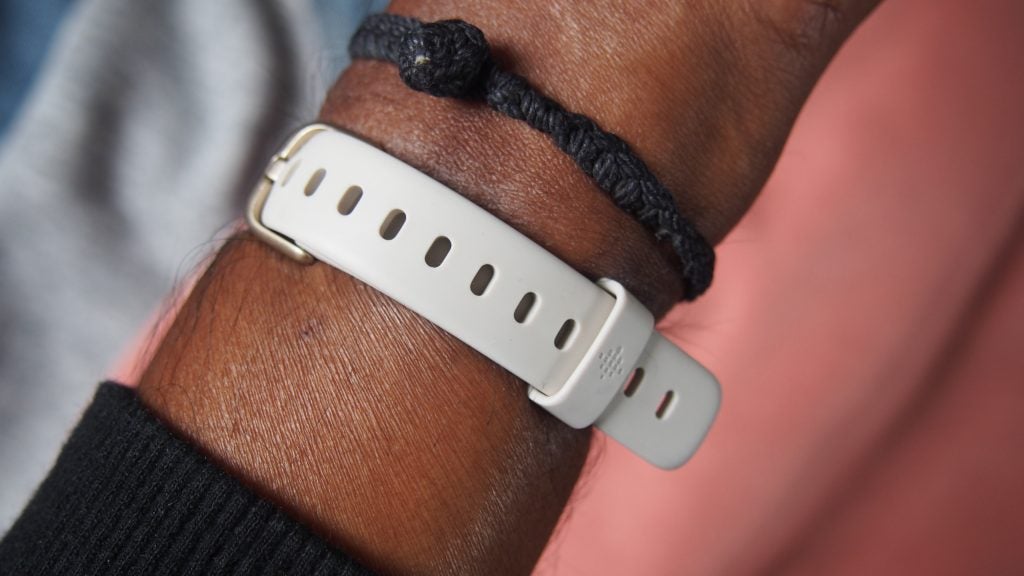
The model reviewed here is the Lunar White/Soft Gold Stainless Steel band, which is clearly geared towards women – but I actually had no issues living with this attractive, well-made tracker on the whole.
The big story here lies with the display, however. For some time now, Fitbit has resorted to including quite drab-looking greyscale displays on its trackers, even while models from other brands that cost significantly less were presenting colour screens on their trackers.
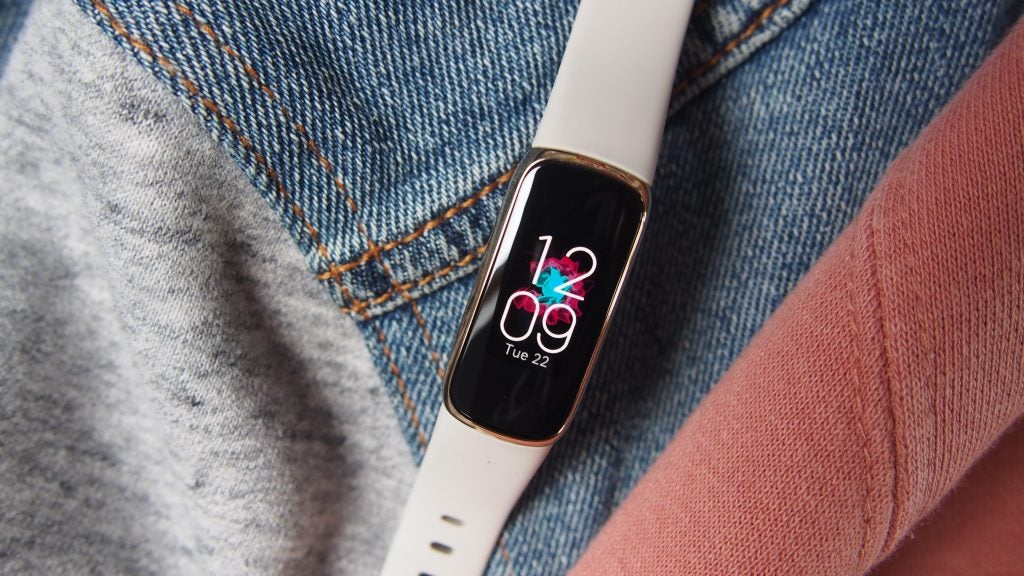
So on the Luxe, you get an AMOLED touchscreen that offers a very similar experience to the colour screens that feature on its smartwatches in terms of depth, sharpness and overall brightness. It’s a nice screen to view indoors and handles bright outdoor light well enough. Annoyingly, though, the panel doesn’t quite stretch all the way across, with quite sizeable bezels above and below consuming potential extra screen estate.
It isn’t an always-on display, either. However, you can adjust the length of the screen time-out, which you’re warned will impact the battery if you set it to the longest setting. There are auto and manual screen-wake options, and it’s possible to adjust screen brightness, too – although, once again, your choices will dictate how long that battery will run for.
Like Fitbit’s Inspire and Charge 4 trackers, there are no buttons here; you simply double-tap on the screen to wake it up and swipe to navigate screens. It’s a nicely responsive screen on the whole, even with sweaty fingers, and – unlike some Fitbit trackers, raise to wake isn’t laggy.
Tracking
- Reliable continuous heart rate monitoring
- Comfortable and accurate sleep tracking
- Track stress in the Fitbit app
- Basic smartwatch features
Fitbit’s foundations have always been in its ability to track your daily activity, sleep and, more recently, heart rate to provide a better picture of your overall health and state of fitness. The Luxe comes with a bit more emphasis on taking care of your mental wellbeing, too.
There’s a pretty standard three-axis accelerometer to track steps and some indoor activities, and enable sleep monitoring. There’s an optical heart rate monitor and infrared sensors that unlock SpO2 monitoring that’s put to use during sleep.
Then there’s connected GPS support to let you piggyback off your phone’s GPS to accurately map outdoor activities. However, it’s a little disappointing that there’s no altimeter to track elevation or floors climbed.
On the band, the Luxe software feels similar to what you’ll find on Fitbit’s smartwatches, albeit with less room to play.
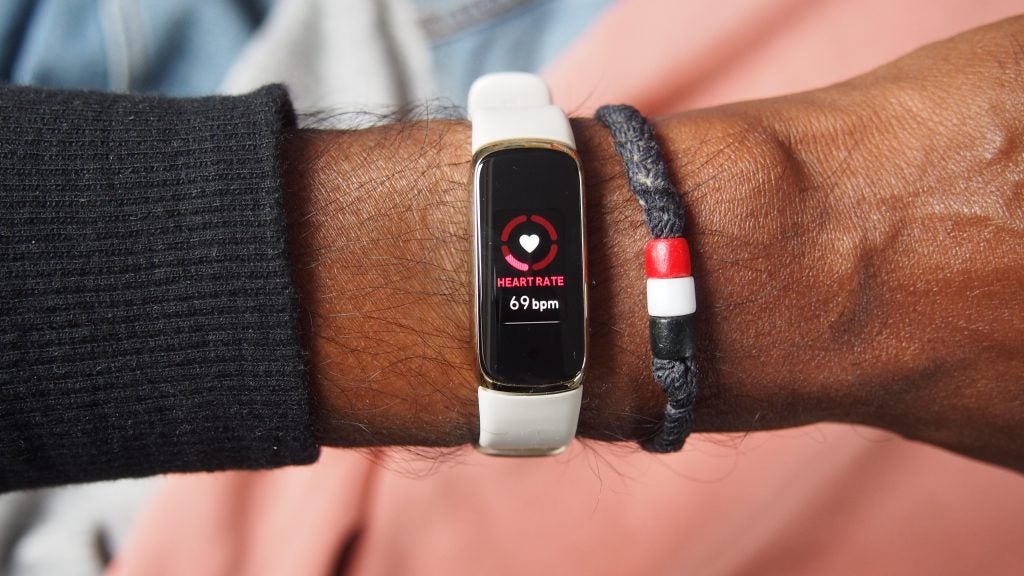
Swipe up from the watch screen and you’ll get your day’s dashboard displaying steps, hours for which you’ve been active, your resting heart rate and your most recent tracked sleep. Swipe down for band settings and right to find additional features such as timers, stopwatches, exercise modes, guided breathing exercises and notifications.
Overall, there isn’t a huge amount to discover here that’s new to Fitbit’s ecosystem on the whole. I found daily step counts held up well against a Garmin fitness tracker; it was within 500 steps on most days, but on more active days could be as much as 1000 steps off the rival tracker.
Where Fitbit really delivers is when it comes to resting and continuous heart rate monitoring. The device was pretty in line with a heart rate monitor chest strap and a Garmin optical heart rate monitor, and gave the impression that data could be largely relied upon for insights and the other features it powers.
Like other Fitbit trackers, the Luxe is a super-light and comfortable tracker to wear to bed. On the band, you can view a snapshot of your most recently logged sleep.
You’ll need to head into the app to see a breakdown of sleep stages, sleeping heart rate and estimated oxygen variation. Those core sleep stats felt reliable, and the additional ones add a nice layer of extra insight. However, you’ll need to sign up to Fitbit Premium to unlock the latter.
The Luxe can handle some sports tracking, but it’s more for casual fitness folk as opposed to serious runners or gym-goers.
There are more than 20 dedicated exercise modes, but only a limited number can be accessed on the band at any one time; you can chop and change which modes are accessible from the Fitbit companion app. There’s Fitbit’s SmartTrack tech to automatically recognise a handful of exercises and it can track pool swims, too.
On outdoor runs, the connected GPS support can be a bit slow to establish a connection with the tracker, and if you rely on just the accelerometer-based tracking, it’s fairly inaccurate. A 15km run was recorded as a 9km run. Add that GPS into the mix and things become more reliable – but better suited to short runs.
For swims, the Luxe will track distance and lengths, but a long swim against Form’s Swim Goggles and a Garmin Forerunner watch was about 400 metres out on a 2000-metre swim. Putting the heart rate monitor to the test for HIIT workouts and interval indoor rowing sessions, the Luxe tended to report maximum heart rate readings that were 5bpm higher than a heart rate monitor chest strap. It’s a better fit for some exercises than others, it seems.
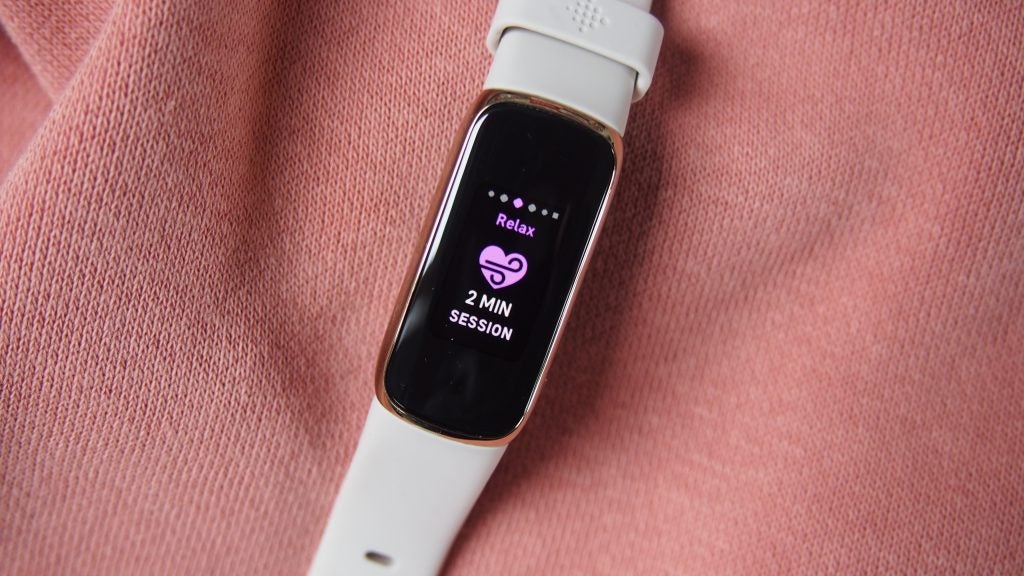
Fitbit’s mindful approach is represented by its Relax guided breathing exercises on the tracker itself and then through its mindfulness features on the app. It also offers stress management scores that are based on what Fitbit calls responsiveness, which is essentially heart rate activity including measurements from sleep and elevated heart rate at rest. There’s also a score generated for exertion balance, which is tied to daily steps and fitness level versus fatigue. A final score is also generated from sleep.
All combined, the Luxe will offer a single score between 1-100, with a higher score indicating fewer physical signs of stress. The idea is that if you end up with a low score, you can head into Fitbit’s mindfulness features to start feeling less stressed. It’s a simple way to interpret your stress, taken from factors that can indicate you’re experiencing physical and mental issues.
The Luxe also offers some smartwatch functionality, although, understandably, it’s restricted by the amount of space you have to play with here. You can view notifications from native and third-party apps, and set up alarms and timers. You can adjust clock faces but you don’t get any sort of music features, app support or access to Fitbit Pay.
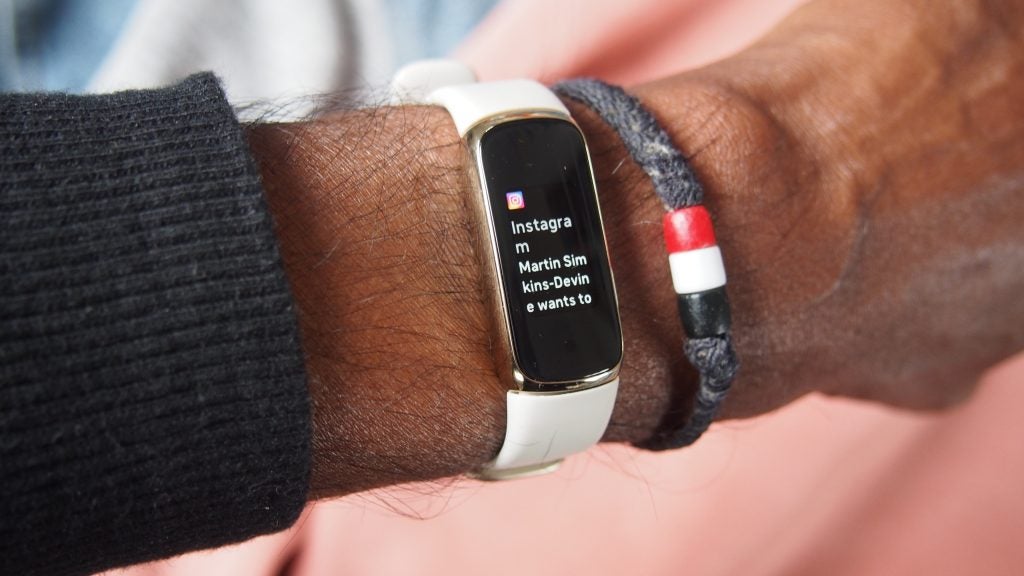
With that notification support, you can interact with some, but most can simply be viewed and cleared. If you’re paired up to an Android phone, you can respond to WhatsApp messages – for instance – with emojis and quick replies. You can also archive emails from Gmail. It will display app icons so you know instantly the source of those notifications.
As expected, notifications feel cramped – but at least you have a decent screen to make them easier to read and quick to interact with.
Battery life
- Up to five days’ battery life
- Charges 0-100% in two hours
In general, Fitbit’s trackers have sought to deliver around a week’s worth of battery life. Its Versa and Sense smartwatches can manage a week on the wrist. The Charge 4 can last a week, and its budget Inspire 2 goes the furthest of all Fitbit wearables between charges, offering up to 10 days.
With the Luxe, you can expect to get five days worth of tracking time, which includes continuous heart rate monitoring and taking it to bed to track sleep.
Daily drop-off was around 15-20%, and that included days where I used connected GPS to track outdoor runs and used the tracker in the pool for swims. Fitbit has shown it can add a colour screen to a slim fitness tracker and offer almost a week of battery life, but cheaper trackers can get you longer.
For charging, there’s a proprietary cable that clips onto the back of the Luxe case, but it doesn’t have the quick-charge powers seen on Fitbit’s Sense and Versa 3 watches. It takes two hours to get from 0-100%, which means it’s far from a snappy charger.
Best Offers
Should you buy it?
You want an attractive fitness tracker: The Luxe is slim and good-looking. It’s ideal for those who want to track steps, heart rate, and keep tabs on stress, but by adding minimal bulk to their wrist.
You want lots of smartwatch features: Beyond notifications, the Luxe’s abilities as a smartwatch are pretty limited, with the missing payment support a disappointing omission.
Final Thoughts
For those people who still aren’t sold on the best smartwatches like the Apple Watch 6 and Samsung Galaxy Watch 3, the Luxe provides great fitness-tracking features in a slim form factor.
In typical Fitbit fashion, you can make it look less like a tracker and more like a fashion accessory, a look that’s elevated with the inclusion of a colour display.
The Luxe doesn’t offer groundbreaking features, but it does what Fitbit does best, offering a companion app that’s easy to use and one that will provide more data and insights if you’re willing to pay extra for it.
FAQs
Yes, this works with both iOS and Android
Yes, this fitness tracker has a colour screen
There is no AOD feature here



